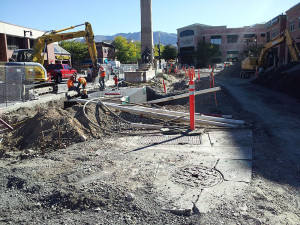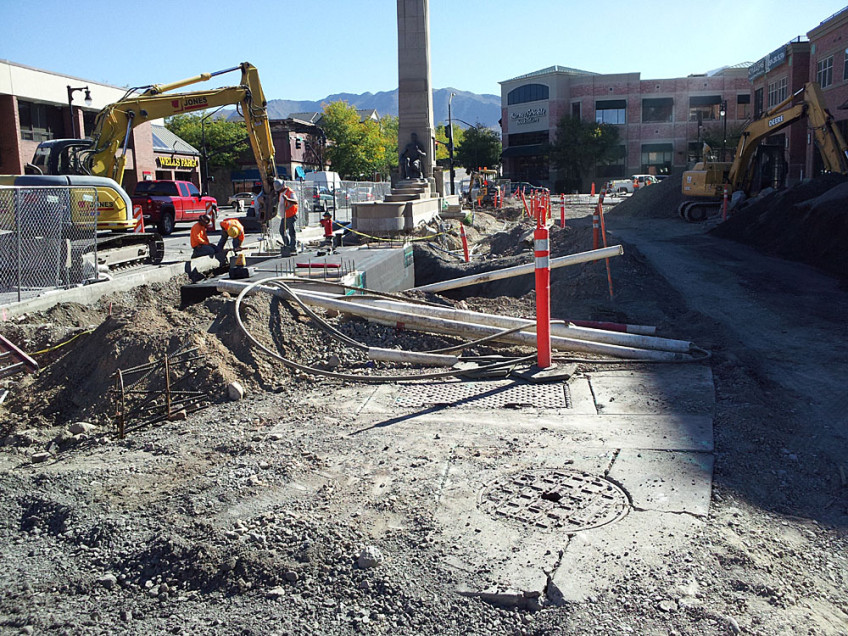The green path ahead: Embracing sustainable construction in civil engineering projects
 As the world faces pressing environmental challenges, the construction industry has taken significant strides toward sustainability. Civil engineering projects, in particular, have witnessed a surge in adopting sustainable practices. This blog post delves into the benefits and challenges of embracing sustainable construction in civil engineering projects. From reducing carbon footprints to overcoming hurdles in implementation, let’s explore the green path that holds the promise of a better future.
As the world faces pressing environmental challenges, the construction industry has taken significant strides toward sustainability. Civil engineering projects, in particular, have witnessed a surge in adopting sustainable practices. This blog post delves into the benefits and challenges of embracing sustainable construction in civil engineering projects. From reducing carbon footprints to overcoming hurdles in implementation, let’s explore the green path that holds the promise of a better future.
Benefits of sustainable construction practices
1. Environmental preservation
One of sustainable construction’s most significant advantages is its positive environmental impact. By implementing eco-friendly materials, reducing energy consumption, and utilizing renewable resources, civil engineering projects can help preserve natural ecosystems and mitigate climate change.
2. Energy efficiency
Sustainable construction practices emphasize energy-efficient design, incorporating better insulation, energy-efficient lighting, and smart building systems. These measures reduce energy consumption, resulting in lower operational costs for the project and decreased greenhouse gas emissions.
3. Resource conservation
Sustainable construction encourages using recycled and locally sourced materials, minimizing the demand for raw resources. Moreover, it emphasizes efficient water management strategies, such as rainwater harvesting and graywater recycling, promoting responsible water usage in civil engineering projects.
4. Improved indoor air quality
Sustainable buildings prioritize ventilation and filtration systems that enhance indoor air quality. This ensures a healthier and more comfortable environment for occupants, reducing the risk of respiratory ailments and improving overall well-being.
5. Social and economic benefits
Beyond environmental advantages, sustainable construction also brings significant social and economic benefits. By creating healthier and more sustainable communities, these projects help improve the quality of life for residents and can foster economic development through job creation and increased property values.
6. Resilience to climate change
Sustainable construction practices enhance a project’s resilience to climate change and extreme weather events. Engineers and architects integrate climate-responsive design elements that adapt to changing environmental conditions, ensuring that buildings and infrastructure withstand the challenges posed by global warming and protect inhabitants.
7. Biodiversity conservation
Green construction projects prioritize biodiversity conservation by preserving natural habitats and minimizing the disturbance to local ecosystems. Incorporating green spaces and rooftop gardens enhances the aesthetic appeal of buildings and provides essential habitats for urban wildlife.
8. Carbon-neutral initiatives
In the pursuit of carbon neutrality, sustainable construction projects focus on reducing carbon emissions during construction and throughout the building’s life cycle. By implementing low-carbon building materials and energy-efficient systems, these projects make substantial strides toward mitigating the impact of construction on climate change.
9. Waste reduction and recycling
Sustainable construction practices actively promote waste reduction and recycling efforts. Minimizing construction waste through careful planning and reusing materials benefits the environment and contributes to cost savings.
10. Social equity and inclusivity
Beyond environmental considerations, sustainable construction projects embrace social equity and inclusivity principles. They prioritize accessible design, ensuring that buildings are accommodating to individuals with disabilities and providing equal access to all members of the community.
Innovative solutions in sustainable construction
1. Green building certifications
Green building certifications, such as LEED (Leadership in Energy and Environmental Design) and BREEAM (Building Research Establishment Environmental Assessment Method), have become valuable tools for assessing and recognizing sustainable construction practices. These certifications serve as industry benchmarks, motivating developers, and project owners to strive for higher sustainability standards.
2. Smart technology integration
The rise of smart technology has revolutionized sustainable construction. Smart building systems optimize energy consumption, monitor indoor air quality, and provide real-time data for efficient resource management.
3. Innovative materials
Researchers and engineers continually explore innovative construction materials that reduce environmental impacts. These materials offer promising alternatives to conventional construction products, from eco-friendly concrete blends to biodegradable composites.
4. Collaborative industry initiatives
Collaborative initiatives between industry stakeholders, government bodies, and non-profit organizations have played a pivotal role in promoting sustainable construction practices. These partnerships foster knowledge sharing, create advocacy networks, and drive collective efforts toward sustainable development.
Challenges in implementing sustainable construction
1. Cost considerations
One of the primary challenges in adopting sustainable construction practices is the initial cost. Eco-friendly materials and technologies can be more expensive than conventional alternatives, posing financial barriers for some projects. However, it’s essential to consider the long-term savings in operational costs and the positive impact on the environment.
2. Limited awareness and expertise
The shift towards sustainable construction requires a knowledgeable workforce and industry professionals well-versed in eco-friendly technologies. Limited awareness and lack of expertise can slow the adoption of sustainable practices. Investing in training and education can bridge this gap and accelerate the integration of sustainable solutions.
3. Regulatory hurdles
In some regions, stringent regulations or lack of supportive policies may hinder the implementation of sustainable construction practices. Advocacy and collaboration with local authorities are essential in overcoming these regulatory challenges and fostering an environment conducive to sustainable development.
4. Market demand and perception
Sustainable construction practices may face resistance from market demand and perceptions. Convincing clients and stakeholders of eco-friendly solutions’ long-term benefits and cost-effectiveness can be challenging. However, the demand for sustainable projects steadily increases as environmental awareness grows.
Overcoming challenges through collective action
To overcome the challenges in implementing sustainable construction practices, collective action and shared responsibility are essential. Government agencies must enact supportive policies, providing incentives and regulatory frameworks that encourage sustainable building practices. Industry professionals need to prioritize continuing education to stay abreast of the latest innovations in sustainability.
As the construction industry journeys towards sustainability, We at McNeil Engineering play a crucial role in championing eco-friendly practices. Providing civil engineering and site engineering design services for a wide range of projects, McNeil Engineering brings our expertise to the forefront of sustainable development.
Visit us here to learn more about our commitment to environmental stewardship and the innovative solutions we offer for private and public projects. Embrace the green path ahead with us here at McNeil Engineering, and let’s build a future where civil engineering projects benefit communities for generations.

